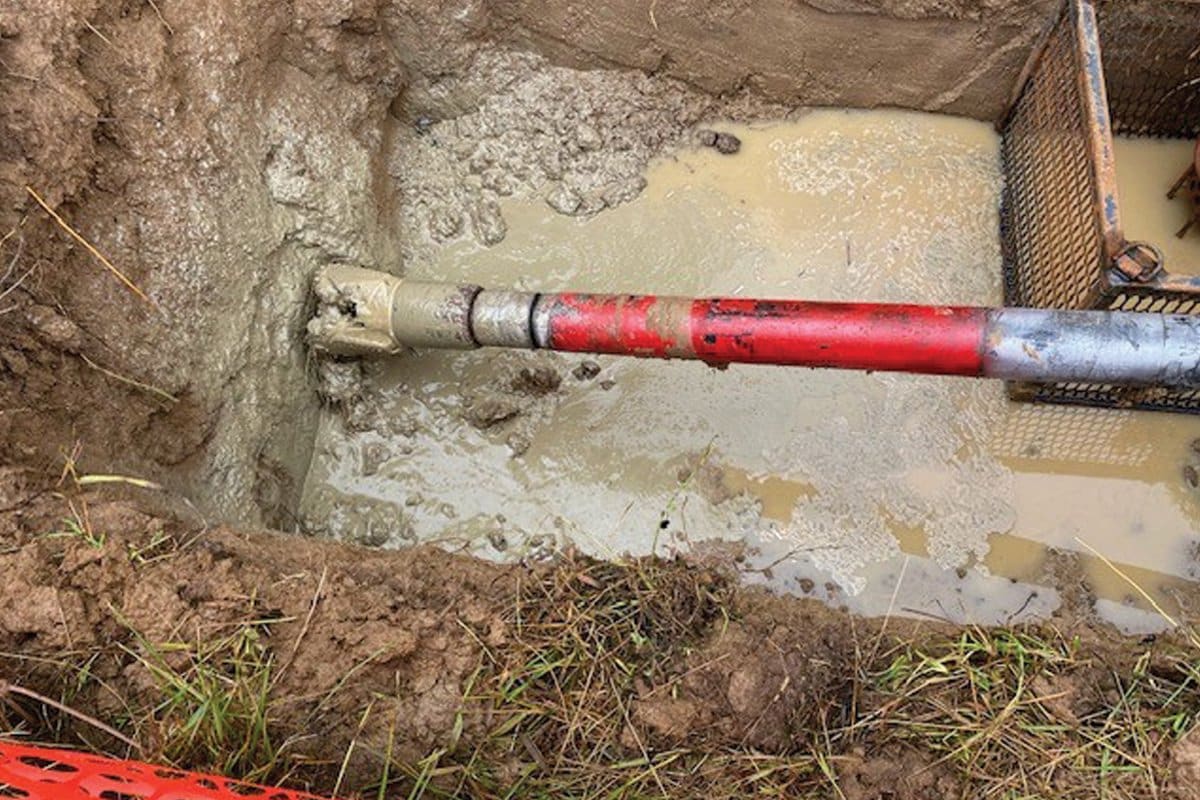Drill Master: Pitch & Roll: Keys to Tracking
A modern horizontal directional drilling machine is a combination of several different systems, and every directional drilling installation depends on all systems functioning smoothly.
Because a directional unit’s “steerability” is one of its most important features, the tracking and guidance system is essential for every directional unit, no matter what its make or model.
To drill straight ahead, the drill string and bit are rotated as forward thrust is applied. To make a direction change, rotation of the drill string and bit is stopped and the slant face is positioned so that it is opposite the direction of the desired change in the bore path. When thrust is applied without rotation, the bit will move in the direction away from the slant of the face.
To be able to steer the path of a bore, the machine’s operator must know the position of the bit’s slant face and be able to monitor its orientation as the bit is slowly rotated to the correct position for a direction change. Electronic tracking and guidance equipment tells the operator the bit’s orientation, along with other critical information.
Basic Tracking Electronics
Basic tracking systems in use today are comprised of a transmitter mounted in a protective housing in the bore head, and a hand-held receiver operated by a crew member who walks directly above the drill head as a bore progresses. The transmitter sends radio signals to the receiver which processes them and displays the information on a window at the top of the receiver. Data either are relayed to the drill operator by two-way radio, or are displayed on a remote receiver at the drilling unit’s operator station.
Electronic tracking and guidance systems provide the following information:
- Roll-the position of the bore head’s slant face
- Pitch-angle of inclination of the drilling head
- Drill head location
- Drill head depth
- Drill head direction
- Transmitter status, including temperature and battery level
- This Drillmaster Report covers roll and pitch.
Roll
To monitor roll, all brands of tracking equipment use a clock face which appears on displays of hand-held and remote receivers. Most models divide the clock face into 12 segments, although some divide it into 16 segments.
The position of the slant face is indicated on the clock face. To change the bore path, the operator slowly rotates the drill string until the “hand” on the clock is in the position that will result in the desired direction change.
Twelve o’clock takes the drilling head up.
Six o’clock is down.
Three o’clock is right.
Nine o’clock is left.
Of course, the face can be positioned at any point on the clock face-2 o’clock takes the head up and to the right, eight o’clock is down and to the left, and so on.
It is easy to recognize how useful a remote display can be when making precise direction changes. Being able to see the display reduces the opportunity for mistakes that can occur during radio communication between the crew member with the receiver and drilling unit operator.
Pitch
Pitch-the angle of inclination up or down-is displayed using an up or down arrow and displaying the percentage of deviation. Pitch is calculated as rise or fall divided by length. For example, a 1 percent change in pitch over a distance of 100 ft (30 m) is the rise or fall of one foot. The reason pitch is used is because it is simpler to figure rise and fall divided by length than to figure angle using trigonometric calculations.
Pitch tells the operator the downward angle necessary to take the drill head to the depth where the path of the bore will be leveled off, and pitch information is used when the drill head needs to be aimed upward toward the targeted exit point, or when needing to avoid obstacles.
Pitch also helps the operator keep drill pipe bend radii within acceptable tolerances. Bending the pipe more than the allowable maximum pipe bend radius will damage pipe or result in breaks at joint connections.
The allowable minimum bend radius will vary with the size and model of machine and brand and size of pipe, so it is essential to know manufacturers’ specifications before beginning any installation.
A rule of thumb is never to exceed a 6 to 8 percent change in pitch in any 10-ft (3-m) length of pipe. Depending on the electronic equipment being used, the computer will calculate the bend, or it is easily figured by referring to the pitch at the start of a direction change and keeping corrections within the 6 to 8 percent target limit.




